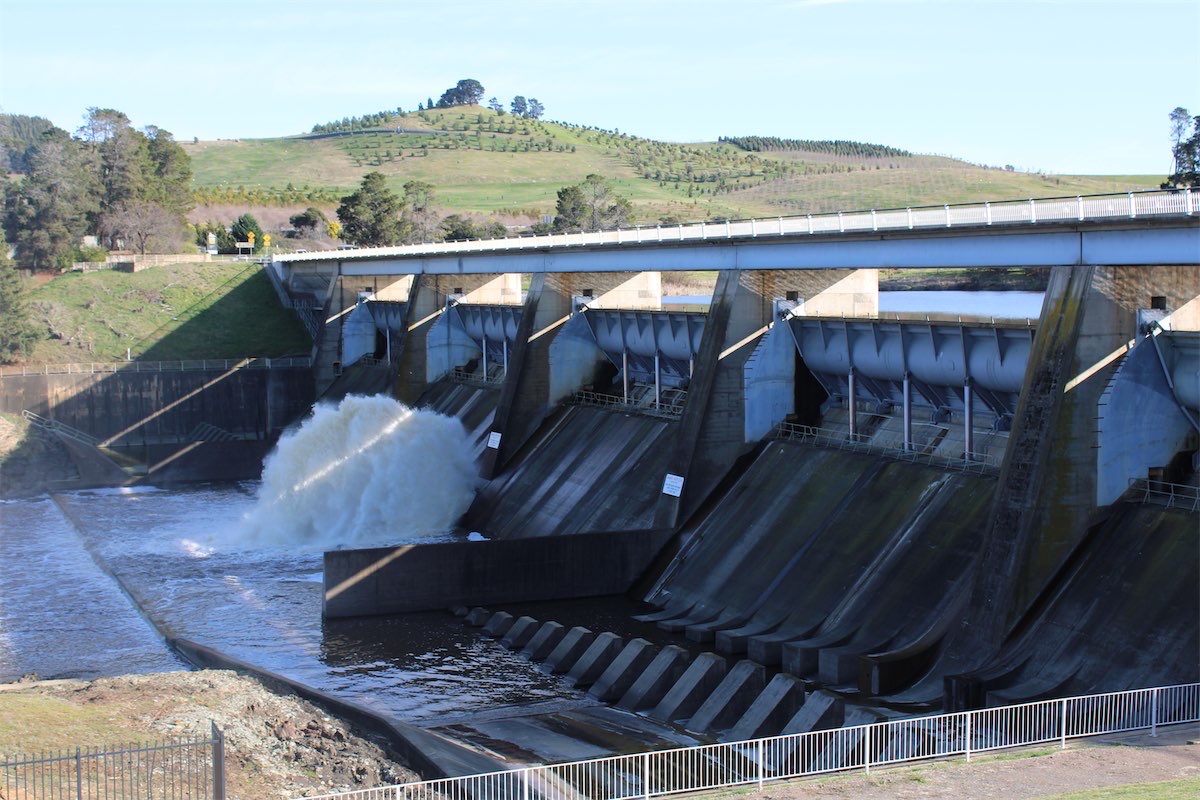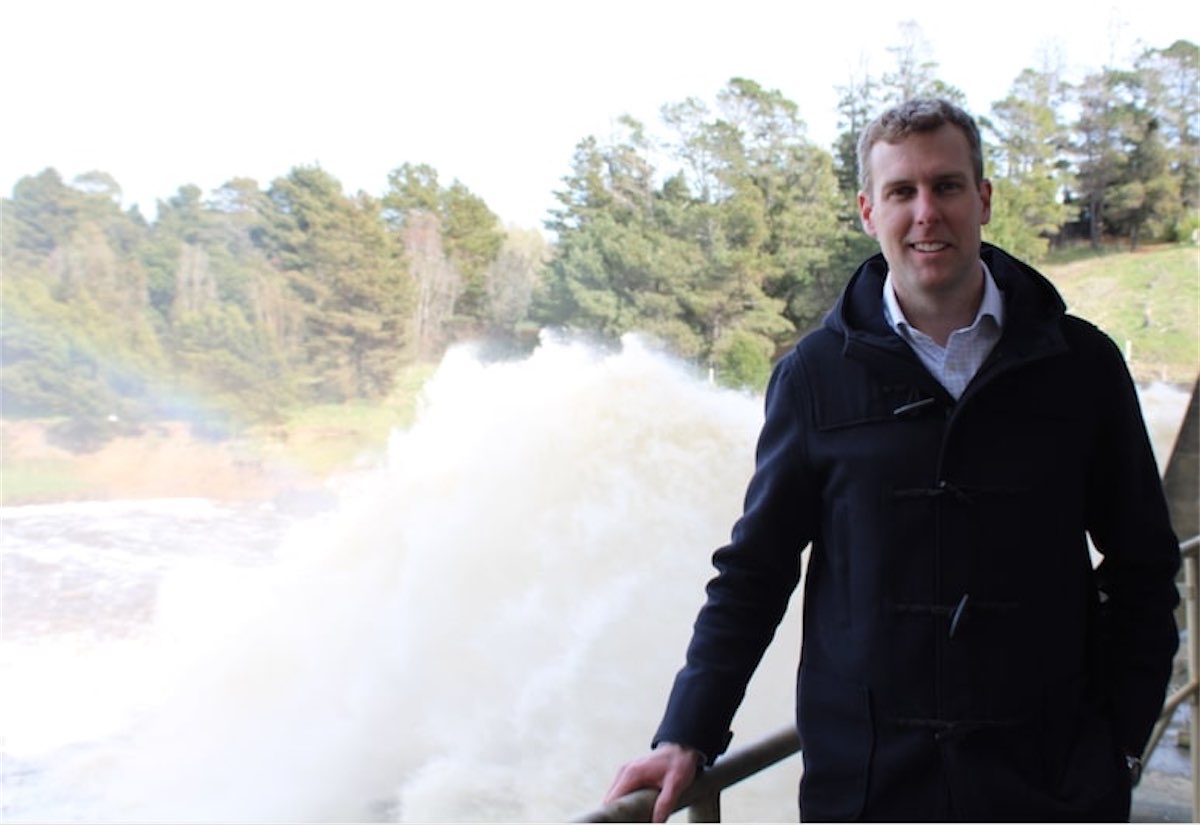
NICK OVERALL reports from the hidden depths of Scrivener Dam and reflects on what the mighty structure means to Lake Burley Griffin.
IN 1964 a drought-struck Canberra anxiously waited for the heavens to open.
Lake Burley Griffin, seven months after finishing its four-year construction, was all but a dusty bowl with a few pools of water that mosquitoes buzzed around.
A 33-metre-tall feat of German engineering called Scrivener Dam lay dormant. Barely a trickle flowed from its enormous floodgates.
So empty was the lake that a rowing championship slated for April that year appeared doomed.
It seems almost impossible when standing outside Scrivener Dam some 56 years later on a clear September morning – one where the megastructure is holding back 33 million cubic metres of water and discharging tens of thousands every second.

On a behind-the-scenes tour of Scrivener, National Capital Authority Lake and Dam manager David Wright tells us it’s just an average day of work for the dam.
“Weeks ago when we received that big rain event, flows at that time were the highest we’ve seen in around a decade,” says Wright.
“At the peak it was about 630,000 litres per second. That’s an Olympic swimming pool every four seconds.
“Over the course of three days we released 60 gigalitres of water through the dam and that’s over twice the volume of the lake.”
When the clouds finally erupted with the desperately-needed deluge in autumn of 1964, it took only six days for Canberra’s prized waterway to fill.
The lake was the architectural pinnacle of Walter Burley Griffin’s vision for Canberra. The key to all of it was Scrivener Dam – 55,000 cubic metres of concrete built to trap the flow of the Molonglo River and keep Lake Burley Griffin at precisely 555.93 metres above sea level.

The engineering marvel began construction in 1960 and was named after surveyor Charles Scrivener, who recommended the location of the nation’s capital in 1909.
David tells us that the tens of thousands of litres we’re seeing discharged are from just one of the dam’s three sluice gates.
These sluice gates, each built to release up to 50,000 litres a second, are dwarfed by the five “fish-belly” gates that are 30.5 metres wide and discharge a minimum of 80,000 litres a second.
At full capacity, these gates together release eight and a half million litres of water every second.
The only time all five gates opened simultaneously was in the flood of 1976, an event that saw hundreds of Queanbeyan residents evacuated from their homes.
“Not many dams have fish-belly flap gates like these that allow the water to spill over the top of the gates,” says Wright.
“What those gates allow us to do is really carefully control the lake level. What comes in has to be released to maintain that level.”
Watching over this incredible torrent of water is a nearby control room. Inside, screens covering the walls display data from dozens of hydrometric and weather stations located in the rivers and creeks throughout the water catchment.
“When it starts to rain, we [have] a team here on 12-hour rotating shifts so someone is here 24 hours a day to monitor how much water is coming in from the catchment,” says Wright.

A trip down a winding flight of stairs takes us underneath the dam where a long tunnel filled with hydraulic machinery stretches its length. Booming echoes ring out as Canberra’s commuters drive on Lady Denman Drive above us.
Plastic buckets hang on one side of the tunnel – curiously analogue devices compared to the high-tech machinery we’ve gawked at so far.
According to Wright, they catch overflowing hydraulic oil so that it doesn’t get into the drainage system and get pumped downstream.
“Quite often the simplest solution is the best,” he says.
“We could go down the track of getting something engineered and installed but the buckets collect things pretty effectively.”
Crouching through a few more confined and particularly muddy tunnels and we’re standing above the sluice gate we saw the water gushing from earlier.
The cascade is awe inspiring. It’s hard to mentally grasp just how much water is releasing even while standing mere metres from it.
And yet, when we turn around those huge fish-belly gates tower above us. It’s more than a little daunting to think that just behind them lies the might of Lake Burley Griffin.

While they’re engineered to be able to withstand a once-in-a-5000-year flooding event, Wright says a recent discovery will require new works to be undertaken to ensure the dam can continue to do its vital job.
“What we found is that under certain conditions there’s a risk that flows from the floodgate could undermine the foundation underneath the dam and cause it to fail,” he says.
“It’s not an imminent risk, but there is a risk in the future.”
To prevent that from happening, the federal government has committed $38.5 million to maintain the lake for the next century.
Over the next few years, 700 anchors will be installed 15 metres down into the foundation rock to strengthen the dissipator slab, all while the dam continues to operate.
For if this incredible structure were to fail, residents along the Molonglo would be needing a little more than an umbrella to stay dry.
Who can be trusted?
In a world of spin and confusion, there’s never been a more important time to support independent journalism in Canberra.
If you trust our work online and want to enforce the power of independent voices, I invite you to make a small contribution.
Every dollar of support is invested back into our journalism to help keep citynews.com.au strong and free.
Thank you,
Ian Meikle, editor




Leave a Reply